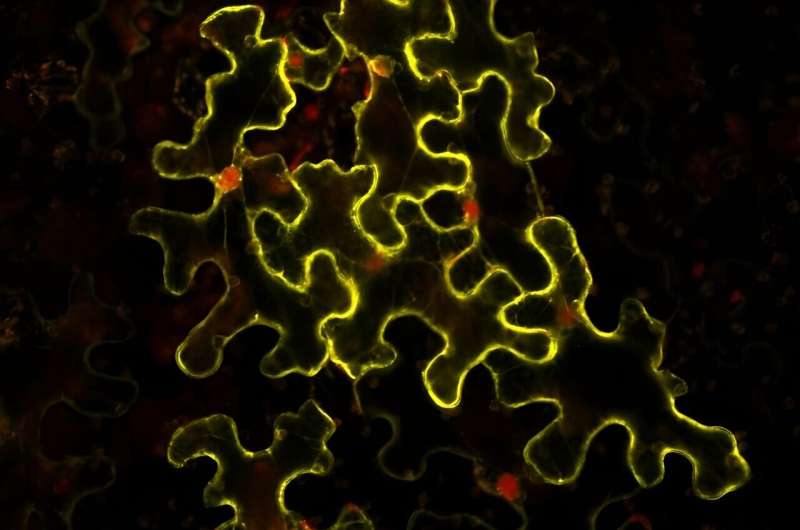This article has been reviewed according to Science X's editorial process and policies. Editors have highlighted the following attributes while ensuring the content's credibility:
fact-checked
peer-reviewed publication
proofread
Unveiling the role of AGO's post-translational modifications in plant gene regulation

A new study led by Nicolás Bologna, a CSIC researcher at the Center for Research in Agricultural Genomics (CRAG), sheds light on the crucial role of the N-terminal extension (NTE) of AGO proteins, offering new insights into RNA-associated gene regulation mechanisms.
The AGO1 protein, short for ARGONAUTE1, is crucial in post-transcriptional gene silencing, a key process that controls gene expression guided by small RNAs (sRNAs). Essential across all plant species, AGO1 loads sRNAs and regulates the expression of target mRNAs, thereby orchestrating crucial pathways during plant development and in response to biotic and abiotic stresses.
The plant model Arabidopsis thaliana encodes ten AGO proteins involved in diverse gene-silencing pathways. While most of their amino acid sequences are conserved, their NTEs vary in length and amino acid composition. This variability inspired CRAG researchers to hypothesize that the NTE confers specificity to the AGO protein's gene-regulating function.
"Research on AGO1 has been mainly focused on the conserved domains; however, its NTE has recently garnered attention for its diverse regulatory functions, including subcellular localization and small RNA loading," explained Andrea Martín-Merchán and Antonela Lavatelli, co-authors of the study.
In this study, published in the Nucleic Acids Research journal, CRAG researchers uncovered a novel role for the AGO1 NTE. They discovered that this region interacts with the PRMT5 protein, which catalyzes symmetric arginine dimethylation (sDMA) at specific residues of the AGO1 NTE. Their findings showed that sDMA affects AGO1 functionality by altering the loading of a subset of sRNAs and reshaping the interactome of AGO1's NTE.
Furthermore, the study extended beyond AGO1, revealing that symmetric arginine dimethylation of NTEs is a common process across various Arabidopsis AGO proteins, including AGO2, AGO3 and AGO5. This comprehensive analysis underscores the importance of post-translational modifications in fine-tuning RNA-associated gene regulation in plants.
By elucidating the role of arginine methylation in AGO proteins and its implications for small RNA-guided mechanisms, this research enhances our understanding of gene expression in plants.
This study paves the way for future studies exploring the regulatory functions of NTEs in AGO proteins. Additionally, understanding the physiological role of these changes in the plant interactome will deepen the knowledge of gene-silencing mechanisms during plant development and in response to stress conditions.
More information: Andrea Martín-Merchán et al, Arabidopsis AGO1 N-terminal extension acts as an essential hub for PRMT5 interaction and post-translational modifications, Nucleic Acids Research (2024). DOI: 10.1093/nar/gkae387
Journal information: Nucleic Acids Research
Provided by Center for Research in Agricultural Genomics (CRAG)




















